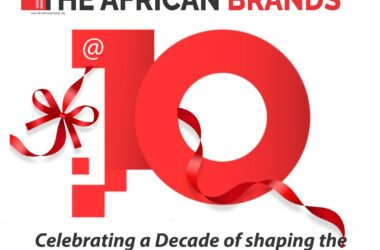We would advise objective consideration of this piece, to situate it properly in relation to its purpose; CONSUMERS’ ASSEMBLY would rather that issues of concern serve collective good of all, albeit from the perspective of CONSUMERS, not minding parochial considerations. That also explains our position of inquisitiveness. We would always ask questions.
Recently, the social media was agog with series of complain by custoners on how Banks charges them for card maintenance fee, stamp duty among others. The protests led to certain questions about the use of debit cards in facilitation of Online banking services, as the case may be.
As background to their inquest, it’s important to appreciate the nearly disruptive innovativeness technology brought into banking practice in Nigerian local market.
Checks by Consumers Assembly has shown that, modern-day banking practice and service provision anchors on technological advancement, without which present experience would not be.
Hitherto, across the counter transaction in the traditional setting slowed down response-timing and speed of productivity on the part of banks, constrained the customer in terms of options, such as is now obtainable with the plenty opportunities open with the Online platforms, including payments, funds transfer and retail purchases.
This singular window of opportunity changed interactive tradition, improved on lifestyle, injected sophistication in spending pattern, etc. The list of new experiences is yet inexhaustible. Travel, leisure, social engagement, and so many other such fund-based activities have all changed so drastically the distinctions among generation of only within 50 years-long bracket is looking like a century and a half apart.
When brands in the category of the now old generation commercial banks of the late 1980s/early 90s ventured into innovative service provision, the unique offering of electronic funds transfer and ‘shorter queues’ back then, seem like a joke looking back now, just in a space of about 25years. Online commerce was not conceivable then; mobile banking was not in the psyche of men back then. All the beautiful plusses of modern banking happened on us all (in underdeveloped economies) like magic.
To this end, Analysts are of the view that, innovation should advance quality of life and at least reduce cost of living. Otherwise, development will not count such as applicable. The cost of breakthrough in any direction must not over-shadow the gains such innovations bring to bear.
These Analysts are cantering their focus on the implication of the instrument of the debit card, which is central to the operation of ompresent day banking service delivery and proactive in the mass market bracket. By this category definition, they are looking at over 75% portion of the banking public market.
They are the literate and barely literate, career and professional people, teachers, students, small and meddle enterprise owners/operators, private sector workers, daily labourers, self-employed across categories, and by which they mean in inclusion of ‘okada’ riders, bus drivers and conductors…they all have and use the ATM CARD.
While giving his thoughts on this issue, a Lecturer in the department of Banking and Finance with the Benue State Polytechnic, Ugbokolo, Elaigwu Ikobi said; “the Automated Teller Machine (ATM) card is basically a debit card in this market. In developed economies, the popular card is the credit card. With the credit card, users are permitted a margin of funds in credit, within which range they can make purchases, transfer funds until such a time when they pay back the credit permitted (with some small margin of cost).”
In our clime, he continued, “it is a credit card, in which case, you spend what you have in your account, without recourse to any opportunity of debit. In fact in some cases, some banks will even ensure their charges on customer’s transaction are secured before permitting access to the total sum in the account. Hence you get information such as ledger and available balance.’
According to him, “this happens mostly within the last week of the ending month. At such times, the customer is prevented from expending all of the money in the account so that on the last working day of the month, the bank will quietly take what they have calculated as cost to the customer for using his or her own money, up until the last day of the month.”
“following from the statutory roles of commercial banks, they are designed to carry out banking services to account holding customers by keeping their funds in safe keeping and enabling them express access to such deposited funds, in so far as the bank customer of account holder decides to get access to own-money, for whatever reason.”
He further disclosed that, “to facilitate the discharge of that responsibility, account holders are provided with instruments broadly categorised into deposit slip, withdrawal slip (for savings account) and cheque books (for current account holders). Whereas savings account attracts interest on deposit, current account pays cost for transaction. In essence operating savings account attracts no cost.”
Fast-forward to present-day practice where the ATM card is centrally instrumental; all users pay certain costs for its usage, not minding type of account.
A Consumer Advocate, Segun Aluko told National Economy that he has the following The questions to ask:
Must every account holder own/use the ATM card? How much of awareness is created for the consumer about the ATM card? What are the cost components of the ownership & use of the card?
Between the bank & the consumer, who benefits more from the use of the cards?
Who determine the brand of ATM card the consumer own/use? Are charges on the use of these cards discriminatory of account type (as with the traditional method)? Could it be that banks now use these cards as revenue generating components of their service delivery in its entirety? Where is the place of banks’ responsibilities to customers?
According to him, “the above questions, though in-exhaustive in representation of consumers’ concerns, are predicated upon the banking public’s concern about the place of ATM card in the operations of modern day banking; the hypothetical position is that these banks have, in the guise of technological innovation, abandoned their responsibilities to their customers, and commercialised the centre-point of their operational services to the public for unfair gains. It is the place of industry players to allay the public’s fears in line with the questions listed above.”









